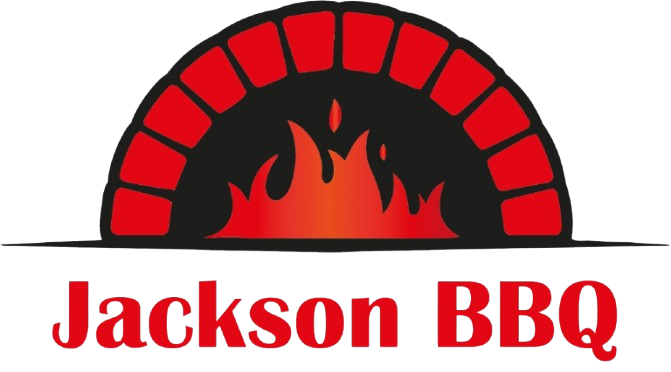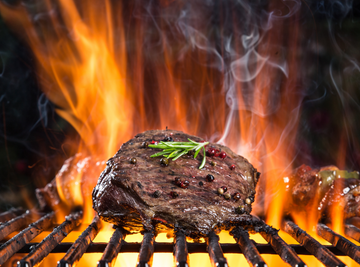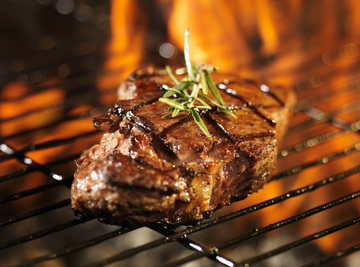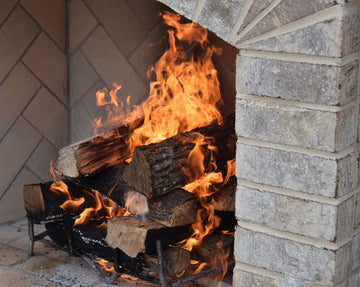Smoking the perfect brisket is both an art and a science—one that requires patience, planning, and the right wood. As the world's largest supplier of premium applewood to the BBQ industry, we've learned a thing or two about what makes exceptional smoked meats. While applewood creates wonderfully sweet and mild flavors, understanding timing is crucial for brisket success regardless of your wood choice.
The Golden Rule: Plan for Time, Not the Clock
The most important lesson any pitmaster learns: brisket is done when it's done, not when the timer says so.
Generally, plan for 1 to 1.5 hours per pound when smoking at 225°F to 250°F. However, every brisket is unique, and factors like thickness, marbling, and even weather can affect cooking times significantly.
Size Matters: Timing by Weight
- 8-10 lb brisket: 8-15 hours
- 12-14 lb brisket: 12-21 hours
- 16-18 lb brisket: 16-27 hours
Always start earlier than you think you need to—you can always hold a finished brisket, but you can't speed up a slow one.
The Three Stages of Brisket Smoking
Stage 1: The Initial Smoke (First 4-6 Hours)
During this phase, your brisket absorbs the most smoke flavor. This is when your wood choice makes the biggest impact. Temperature target: 225°F-250°F
Pro Tip: If you're experimenting with different woods, try blending applewood with stronger varieties like hickory or oak. The apple provides sweetness while the others add depth—a combination that's become increasingly popular among competition teams.
Stage 2: The Stall (Hours 6-10)
The dreaded stall occurs when internal temperature plateaus around 150°F-170°F. This happens as moisture evaporation cools the surface. Don't panic—this is normal.
Options for handling the stall:
- Wait it out: Patience pays off with better bark formation
- Wrap in butcher paper: Speeds cooking while maintaining bark
- Wrap in foil: Fastest method but softens the crust
Stage 3: The Final Push (Last 2-4 Hours)
Once past the stall, temperatures climb steadily toward your target of 200°F-205°F internal temperature.
Temperature Guidelines: What Really Matters
Smoker temperature: 225°F-250°F (sweet spot is 235°F) Internal temperature targets:
- 190°F: Minimum for slicing
- 200°F-205°F: Ideal range for most briskets
- 210°F+: Risk of drying out
The probe test trumps temperature every time. Your brisket is ready when a probe or skewer slides through the thickest part like butter—no resistance.
Wood Selection: Why Premium Quality Makes a Difference
While traditionalists swear by oak and hickory for brisket, don't overlook the benefits of premium applewood, especially when blended with other varieties. New York applewood from heritage orchards provides:
- Consistent burn characteristics for steady temperature control
- Clean, sweet smoke that won't overpower your rub
- Longer burn times from denser wood harvested from mature trees
Many successful pitmasters use applewood for the first few hours to establish a sweet base, then switch to oak or hickory for the remaining cook.
Planning Your Cook: Backwards Timing Method
Work backwards from when you want to serve:
- Serving time: 6:00 PM
- Rest time: 1-2 hours (subtract from serving time)
- Cook time: 12-16 hours for average brisket
- Start time: 2:00 AM - 6:00 AM
Always build in extra time. Better to finish early and hold the brisket than to serve tough, undercooked meat.
Common Timing Mistakes to Avoid
Starting too late: The biggest rookie mistake. Brisket can't be rushed.
Ignoring the stall: Don't increase heat to "speed things up"—this often results in tough, dry meat.
Judging doneness by time alone: Every brisket is different. Trust temperature and texture over the clock.
Skipping the rest: A proper rest (1-2 hours wrapped in towels) is crucial for juice redistribution.
Expert Tips for Consistent Results
Preparation Makes Perfect
- Trim properly: Remove excess fat but leave ¼" fat cap
- Season generously: Apply rub 12-24 hours ahead
- Bring to room temperature: Remove from fridge 1 hour before cooking
During the Cook
- Maintain steady temperature: Fluctuations add time and affect texture
- Minimize door opening: "If you're looking, you're not cooking"
- Start checking after hour 8: But don't obsess over early temperatures
The Final Stretch
- Use quality wood throughout: Inconsistent fuel creates uneven cooking
- Trust the process: Experienced pitmasters develop intuition over time
- Document everything: Keep notes on times, temperatures, and results
Seasonal Considerations
Summer cooking: Higher ambient temperatures may reduce cook times by 10-15% Winter cooking: Cold weather and wind can extend cook times significantly Altitude effects: Higher elevations cook faster due to lower air pressure
The Bottom Line
Perfect brisket timing comes down to preparation, patience, and quality ingredients—including your smoking wood. While every cook is different, following these guidelines will set you up for success.
Remember: great BBQ isn't about rushing to the finish line. It's about respecting the process, understanding your equipment, and using premium materials that deliver consistent results. Whether you're smoking for family or running a commercial operation, the principles remain the same: low, slow, and steady wins every time.
Looking to elevate your next brisket cook? Consider incorporating premium applewood into your smoking strategy. Its clean burn and sweet profile create an excellent foundation for complex flavor development, especially when blended with traditional brisket woods.
Ready to take your BBQ to the next level? Contact Jackson BBQ at 315-510-5802 to discuss premium wood options for your smoking needs. From heritage New York applewood to traditional oak and mesquite, we provide consistent, professional-grade smoking woods that help serious pitmasters achieve exceptional results.



